Submitted by Berrin Chatzi Chousein
Heatherwick: We Are Not Trying To Express Ourselves, We Are Trying Solve The Problem By “Inventing”
Czech Republic Architecture News - Oct 05, 2019 - 13:22 10940 views
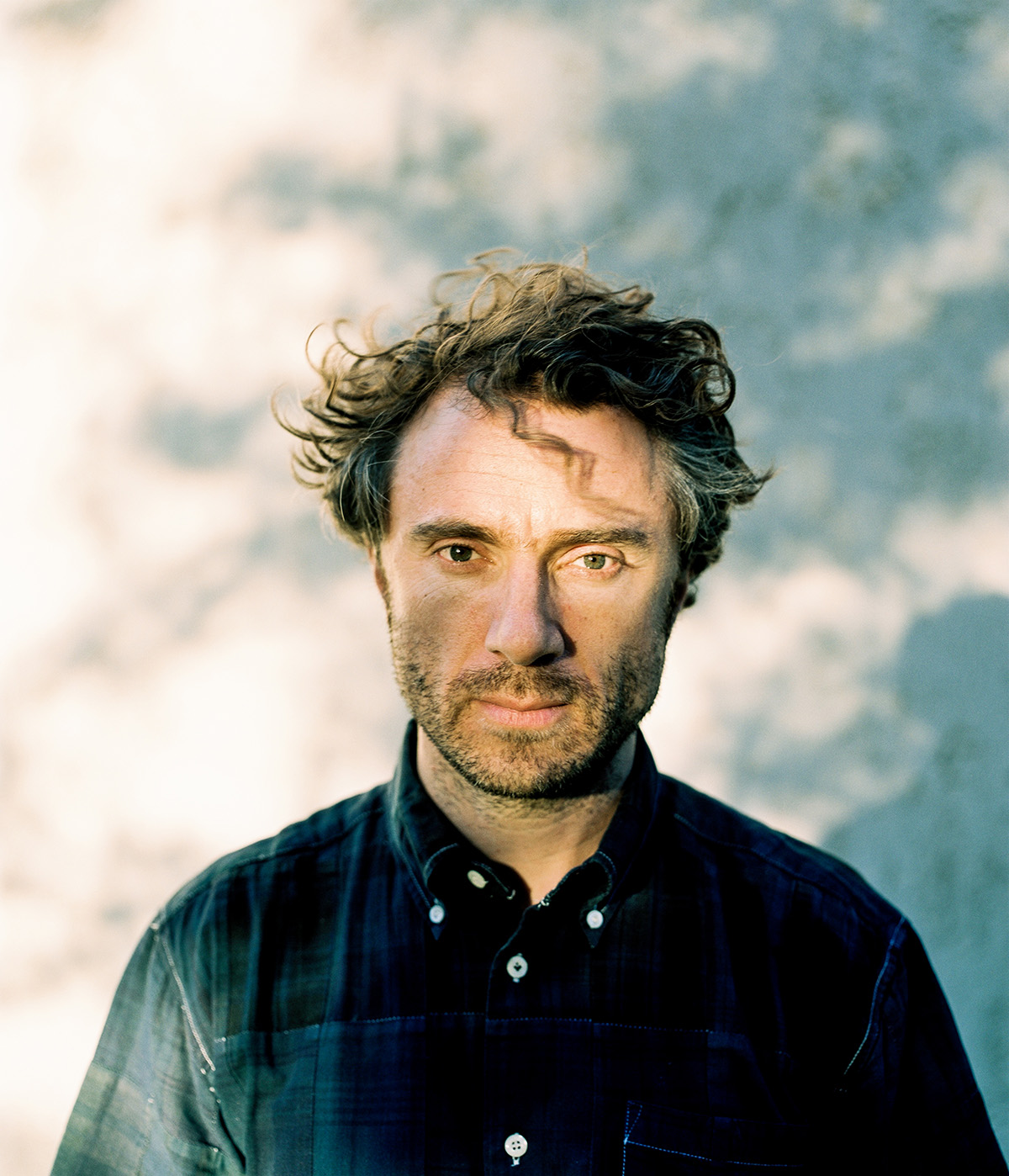
"We are not trying to express ourselves around the world, we are trying solve the problem by inventing," says the prolific British designer Thomas Heatherwick, founder and design director of Heatherwick Studio.
Deriving his inventiveness and originality from the usefulness, the emotions and the sensual traces that people need to experience, Heatherwick’s ingenuity has changed the ways we look at architecture and art on many levels. Focusing on the main problem itself for each project has become a real data-driven factor, according to the designer.
He is certainly a designer who escapes the romantic decisions made in architecture for centuries. The elements that trigger or determine his intrinsic meticulousness don't emerge from a strong form-making approach based on an end-product, but results from a process.
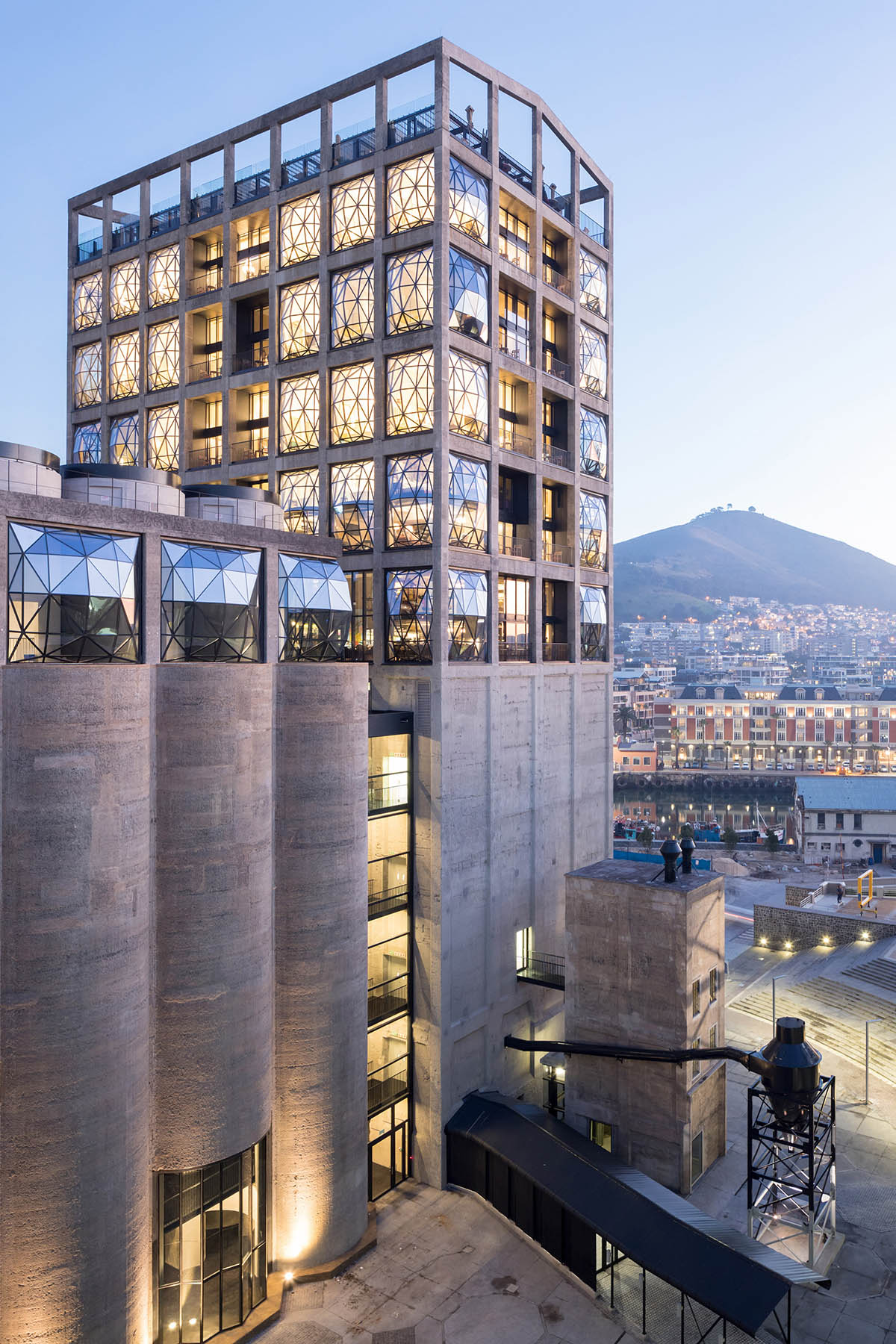
Zeitz MOCAA in Cape Town, South Africa, a transformation of a formerly derelict industrial building into an iconic landmark which is Africa's first international museum dedicated to contemporary African art. Image © Iwan Baan
Heatherwick Studio is behind many important projects built around the world, including The Vessel on New York’s Hudson Yards, the tubular-shaped Learning Hub at Singapore’s Nanyang Technological University, the new Google campuses in London and California in collaboration with BIG, Coal Drops Yard – a new shopping district in London, the Zeitz MOCAA - the transformation of a disused grain silo into a new museum for contemporary art in South Africa and a new terminal for Singapore’s Changi Airport in partnership with Kohn Pedersen Fox Associates (KPF).
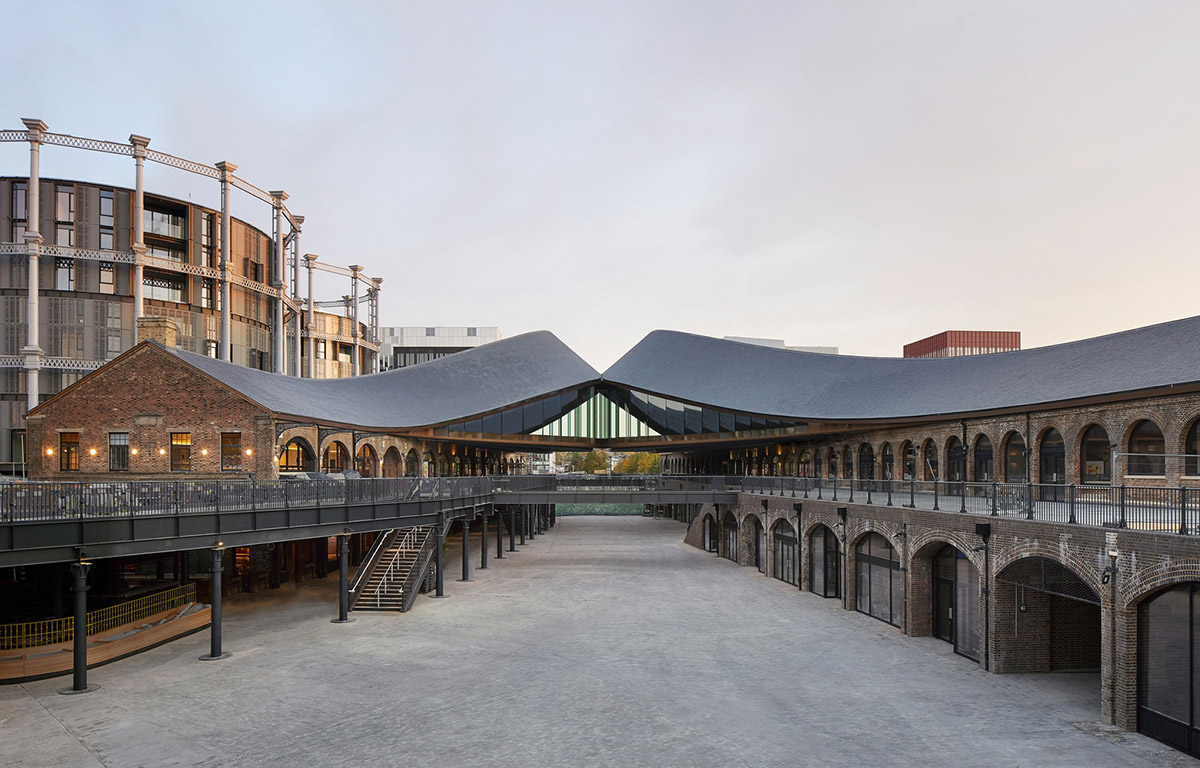
Heatherwick Studio completed the renovation of Coal Drops Yard at King's Cross in central London in 2018. The studio transformed a pair of long Victorian warehouses with attached train viaducts to create a new public space and retail destination with distinctive roof kissing each other. Image © Hufton + Crow
Speaking to World Architecture Community at the reSITE 2019 REGENERATE Conference held on September 19-20 in Prague – in which WAC is the official media partner of the event, the British designer talked about his diverse body of work and discussed his studio’s main design approach on how he combines architecture with his artistic thinking.
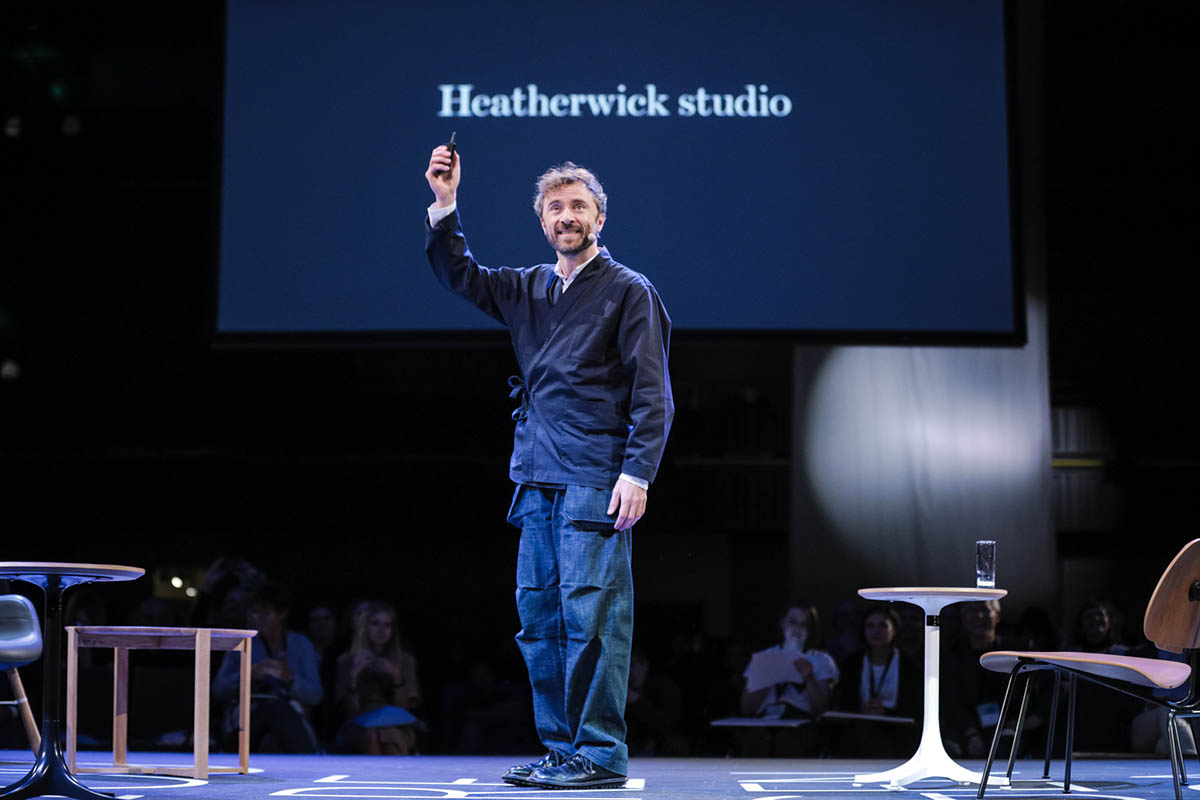
Thomas Heatherwick of Heatherwick studio at the 2019 reSITE REGENERATE stage. Image © Tomáš Princ
"We are trying the find what’s the real brief and our conversations in the studio are always to find what's the real problem to solve. Our passion is about solving problems," said Heatherwick.
"We are not trying to express ourselves around the world, like how do we do something in Prague. We are being motivated by the problem and trying not to have a style in the end," he added.
"But in each place we try to use it as an excuse to develop something particular to there," Heatherwick emphasized.
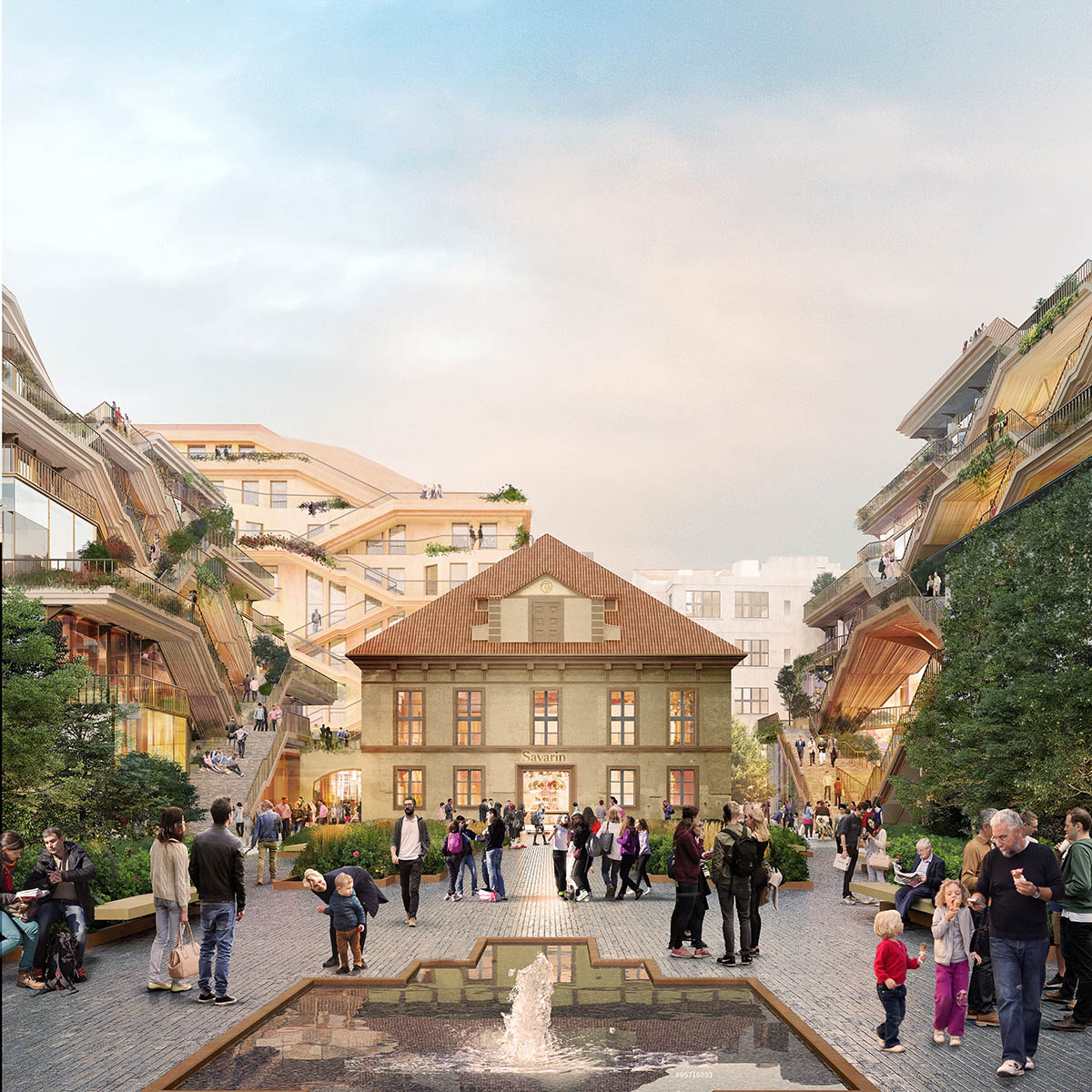
The new Savarin complex will be built in the historic Prague. The design scheme will restore public access to the Riding Hall and surrounding gardens and is further enlivened with new areas of public space not only at ground level but through a series of terraces leading up to the roof levels. Image © Heatherwick Studio
Heatherwick also presented his new project for Prague during his lecture at the conference. Called Savarin, the project will be a mix of retail and office space set within public gardens by creating organic connections through the site and the surrounding district. The project will be Heatherwick Studio's first project that will be built in the Czech Republic.
Discussing the rise of generic models of cities, Heatherwick also said that the similarities of global procurements and some globalized trends have caused architects and designers to produce the same city models or buildings.
"The amazing efficiency of globalization, globalized procurements of places and also trends mean that the same design teams can be designing an office building near the Arctic Circle as well as near the Equator doing similar types of things and combined with the global procurement similarity - which means so often places are generic in some way," he said.
"So it feels like you have to try very hard now because "the genius loci" doesn't work by itself anymore to amplify difference."
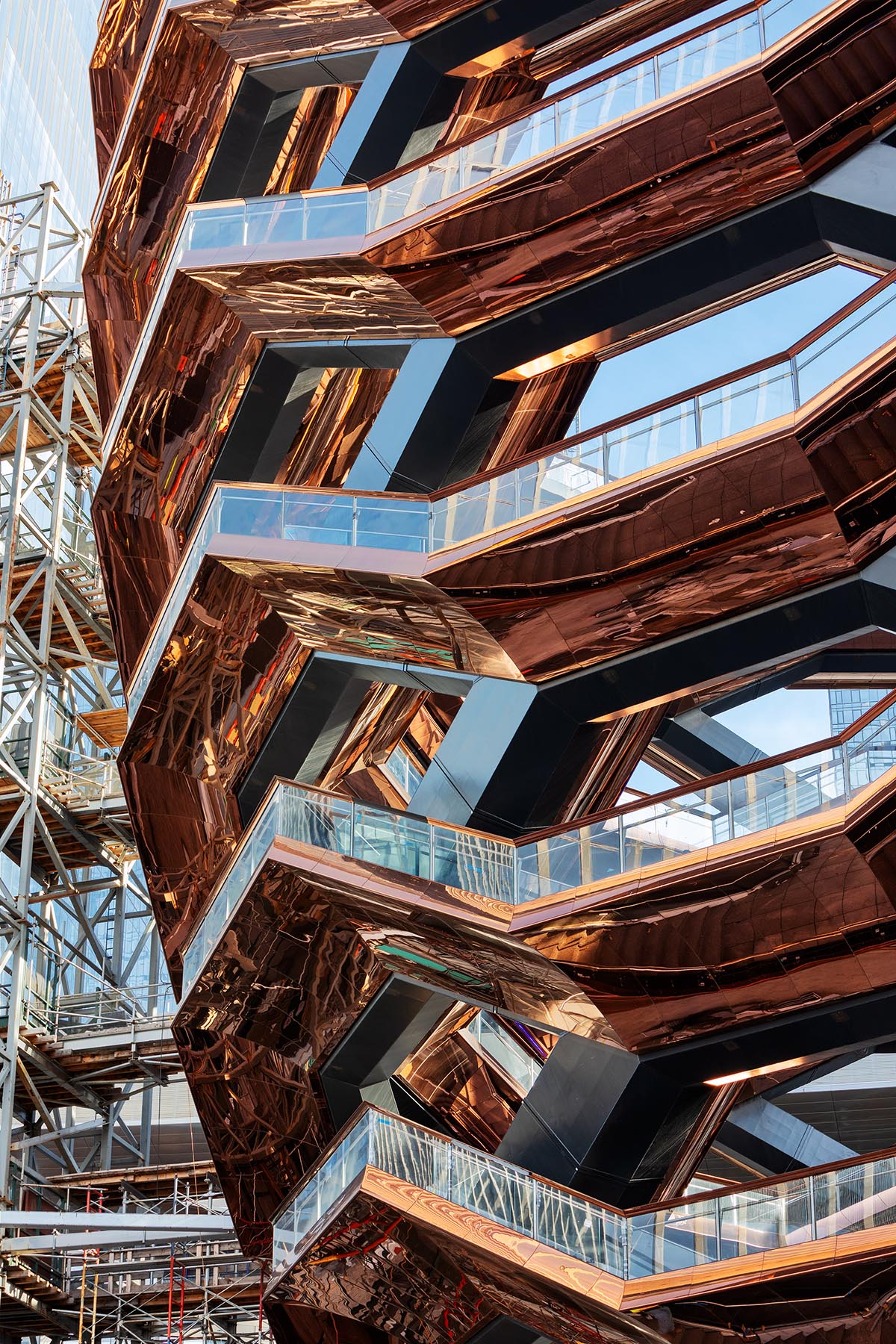
The Vessel, a 16-storey landmark for Hudson Yards in New York. Image © Michael Moran
In this exclusive interview, Heatherwick also discussed the details of his speculative project The Vessel, built on New York’s Hudson Yards, is described as "a piece of urban furniture" in the city – which was opened to the public earlier this year.
"The Vessel originally grew out of a brief for an artwork and in a sense we proposed to look back and relate to the development group leading the project" said Heatherwick.
"Instead we made something which you touched and used and hide extreme physicality because most people have not walked up to the 16th floor for quite a while."
"So the hybrid of The Vessel was something about fitness and about views and about body movement. We can engage people in a different way and create one mile of public space and create a public room where it might mean that someone might have a different kind of a conversational smile or connect with each other in a different way," he added.
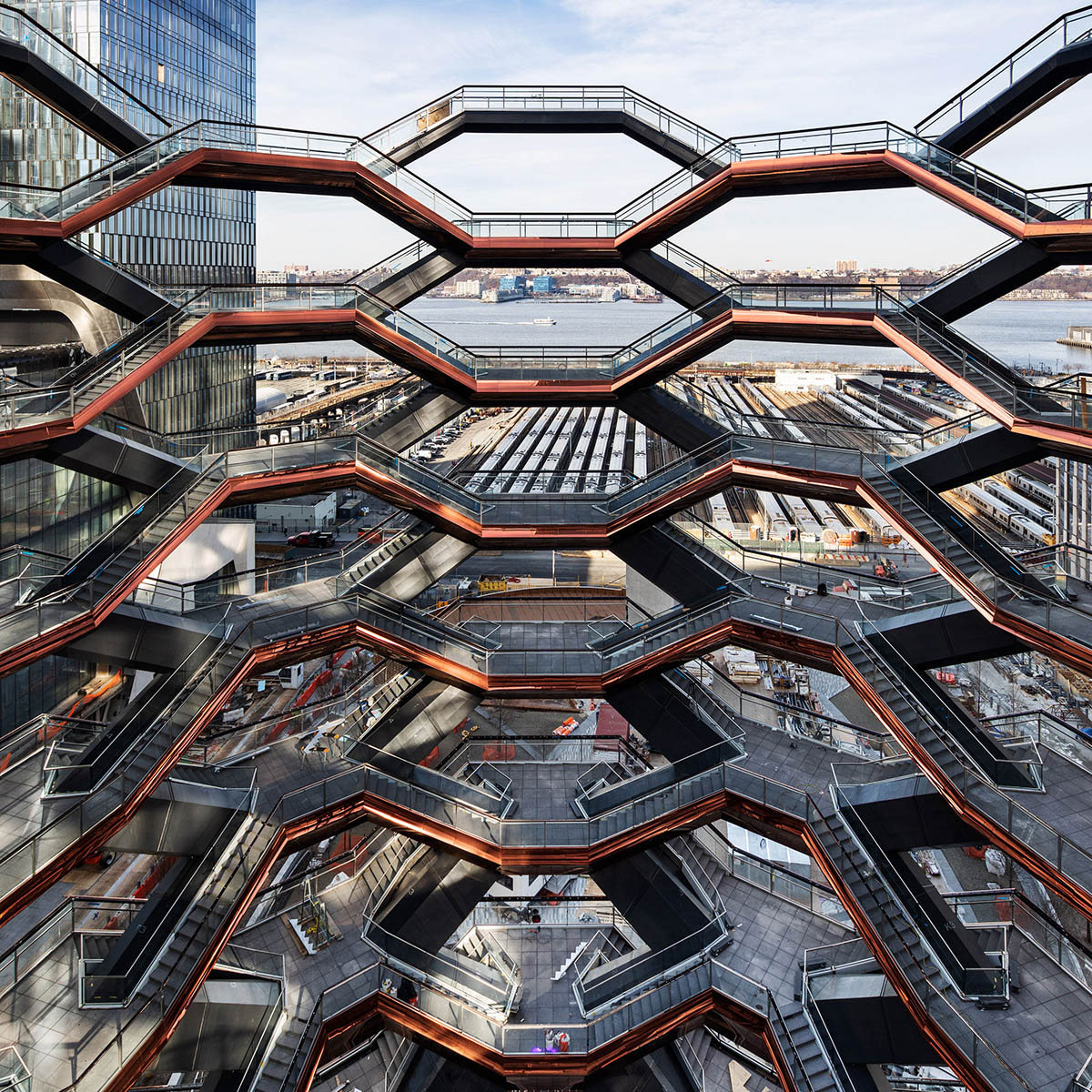
From interior view of The Vessel. Image © Michael Moran
Heatherwick, 49, founded Heatherwick Studio in 1994 in London to bring the practices of design, architecture and urban planning together in a single workspace. Now working with over 200 problem solvers, the studio produces a large number of worldwide projects in different typologies, ranging from buildings, spaces, masterplans, objects and infrastructure. The studio is currently working on approximately 30 live projects in ten countries.
Heatherwick has won various honors and awards, including honorary doctorates from four universities, including Sheffield Hallam, Brighton, Dundee, and Manchester Metropolitan University. He is an Honorary Fellow of the Royal Institute of British Architects and is a Senior Fellow at the Royal College of Art. Additionally, he is the youngest practitioner to be appointed a Royal Designer for Industry.
The studio’s projects currently under construction include Pier55, in the Hudson River, New York, construction on new major headquarters for Google are also underway in both King’s Cross and Silicon Valley - in collaboration with BIG and 1000 Trees, a new mixed-use development just outside Shanghai, situated next to the M50 arts district.
Heatherwick Studio is currently working on the design of Changi Airport’s new Terminal 5 in Singapore with KPF.
Read the full transcript of our interview with Thomas Heatherwick below:
Berrin Chatzi Chousein: Let's start with the theme of the event - this year reSITE’s theme is REGENERATE and it covers the discussion of multiple actions of transforming cities - starting from city policies, new infrastructure, smart tech initiators to mayor’s contributions and affordability. When I examine your projects, spanning works from large-scale to small-scale, apart from their artistic manners, they also propose a new functionality. What are the difficulties of making a small scale structure and producing a large scale structure? For example, The Vessel. When you first started the project, did you think it could have a different kind of transformative effect for the city?
Thomas Heatherwick: A main motivator of our studio’s work is that as cities develop in general they tend to become more similar to each other. And in the past "the genius loci", which was a sort of fashionable expression, and there was the romantic idea that each place would be magically influenced by its local factors, but those local factors struggle to actually influence when they are pitted against.
"Genius loci doesn't work by itself anymore to amplify difference"
The amazing efficiency of globalization, globalized procurements of places and also trends mean that the same design teams can be designing an office building near the Arctic Circle as well as near the Equator doing similar types of things and combined with the global procurement similarity - which means so often places are generic in some way. So it feels like you have to try very hard now because “the genius loci” doesn't work by itself anymore to amplify difference. I think that humans respond to places being particular and you tend not to pick your friends because there is a version of someone else. We are interested in particularity, idiosyncrasy and uniqueness. I don't think we realize that - how much it's not just nice, it's actually really important for the sustainability of cities for them to have their own attitude and approach.
And, I guess with our work in simple terms, we're trying to go against that trend but it's hard to go against that trend because it's a quite strong force. And I suppose it seemed to me that a lot of what we're doing is trying to understand trends and not being scared of them. And that's a hard thing to do because you become a possible trend as well. And then how don't you get scared of your own trend and/or how do you know when to change and move? But there certainly was something that came out of the modern movement in architecture that put artistic thinking into the buildings as obviously function driven and then put the artistic thinking as a thing in front of the building.
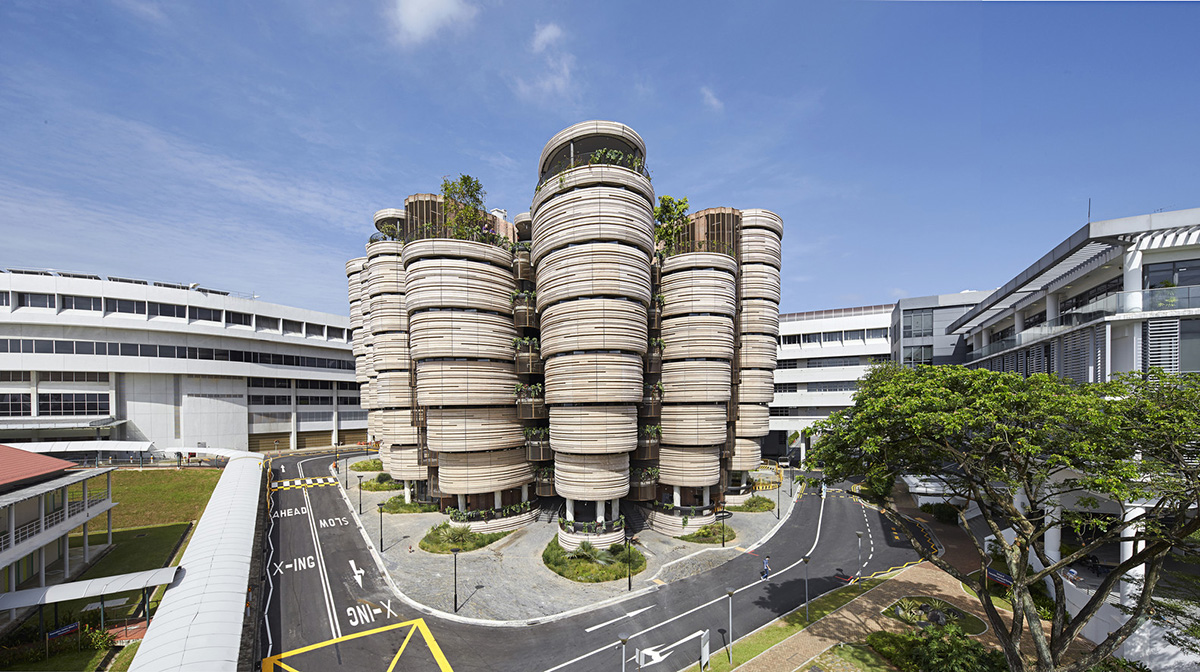
Learning Hub at Singapore’s Nanyang Technological University completed in 2015 in Singapore. Image © Hufton + Crow
"We are trying to see things not as art but artistic thinking and look at where artistic thinking is applied"
So you would get a sculpture sitting on the plaza with these simple buildings behind and that seemed to me to be a formula that had become too familiar. I think the expression - some people called it “the turd in the plaza factor” - and so in projects that we've been doing we are trying to see things not as art but artistic thinking and look at where artistic thinking is applied. And you can argue - is there a compensation for that freestanding sculpture for architecture? We've been interested how we integrate artistic thinking into things we need.
For instance, with the Learning Hub university building that we designed in Singapore, we tried to use the functions that are necessary with that building by creating spaces where there is no hierarchical leader within the non-rectangular learning space to drive the tropical climate and then the low budget and the excitement of achieving the highest possible environmental performance of the building. Those factors are to drive something that isn't like any of the other buildings within the campus, which are quite nonhuman supporting.
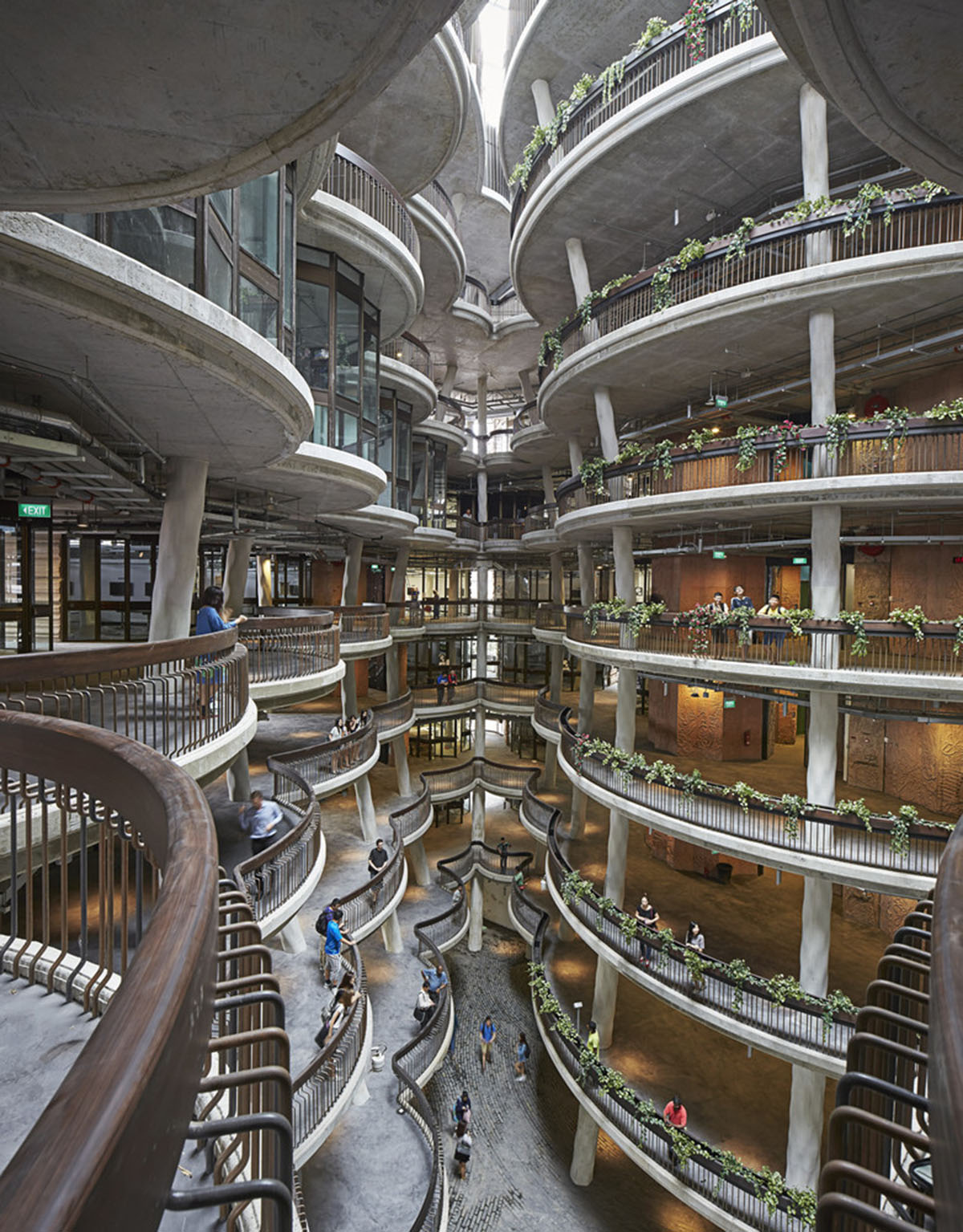
Interior view from the Learning Hub, a series of flower-shaped internal terraces activate the internal layout and provides more interaction. Image © Hufton + Crow
"For the Vessel, we made something which you touched and used and hide extreme physicality"
The Garden Bridge project, for example, was driven by wanting to create more connections in London. But trying to build into that, simultaneously at a human-scale, excuses for different kinds of human interactions and experience. So in everything we're always looking - in a way, taking a function and seeing if we can do more with it. The Vessel, for instance, originally grew out of a brief for an artwork and in a sense we proposed to look back and relate to the development group leading the project. Instead we made something which you touched and used and hide extreme physicality because most people have not walked up to the 16th floor for quite a while.
So the hybrid of The Vessel was something about fitness and about views and about body movement. We can engage people in a different way and create one mile of public space and create a public room where it might mean that someone might have a different kind of a conversational smile or connect with each other in a different way. And some of the things I was talking about - the preciousness of human relationships - are now more critical.
I think we thrive on being around other humans. There are very few places to go when you think - where should I go in London? Covent Garden, again? The river has been regenerated and developed into somewhere where you really can explore. Something that is a bigger story to the bridge as a notion was the idea of amplifying other initiatives that have been happening with the river. That's been changing and growing London through intriguing and changing public spaces.
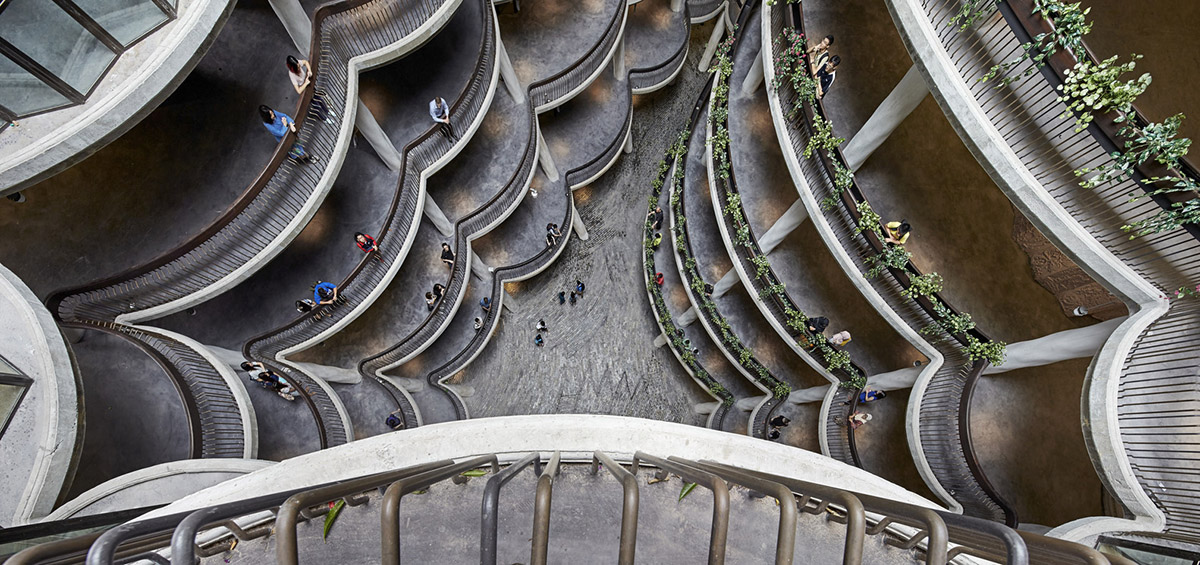
Learning Hub was designed to create a new kind of learning environment for the digital age . Image © Hufton + Crow
Berrin Chatzi Chousein: So your approach is the same for all the projects by rejecting the trends to create a new form and function with uniqueness.
Thomas Heatherwick: We’re tying to be mindful of those. But yes, it also starts with thinking about strategy and also we are in a time where I think we've designed funny things when the modern movement happened and it was the idea of buildings being led by function. But you actually look back at the last 70 years of what's being built and a vast proportion of that is being pretty catastrophic for cities.
And I believe we defined function too narrowly and we treated function as the most basic of things: does it provide electricity? How's it going to floor? Could you look out? Can you load boxes? But the emotional dimension, treating emotion as a function was so important. And we talked and we're excited to grasp the urgency of the climate crisis and the sustainability agenda, which, now we have more people listening, all of these and the conversations can be addressed. That’s very exciting. But the focus on treating sustainability as metric analysis of numbers has been for quite a long time skewed on data and not being balanced by human-centered sustainability. Instead you can make something that only works with one light bulb and the embodied energy in the materials is really low.
"We are trying to find in our work a human-centered and human-focused sustainability"
But unless someone's passion is ignited in some way to want to be there, to want to work there, to want to sustain it. There are some of the ugliest things possible being built. With apparent incredible, sustainable credentials, we are trying to find in our work a human-centered and human-focused sustainability.
And yes, use the minimum possible energy. And yes use materials locally and yes not use materials that give off toxic, gases. And all of these dimensions are incredibly complex. But unless it means something to people and connects with them then all the rest is meaningless. It sounds, when you use the word 'beauty' or 'interest', it sounds like it's frivolous and not the urgent issue, but it's part of the issue simultaneously. Let me think about how much we demolished of the things that were bad built in the last 60-70 years - what a waste and what an enormous waste - and here we are sitting in Prague and what we don’t want to demolish is so much - gorgeous and precious and you want to reuse forever.
I think that in our Google projects that we've been doing in collaboration with BIG, even the brief, coming from the client, was to make buildings beyond themselves to make buildings that could be reused and re-appropriated in the future and flexible enough.
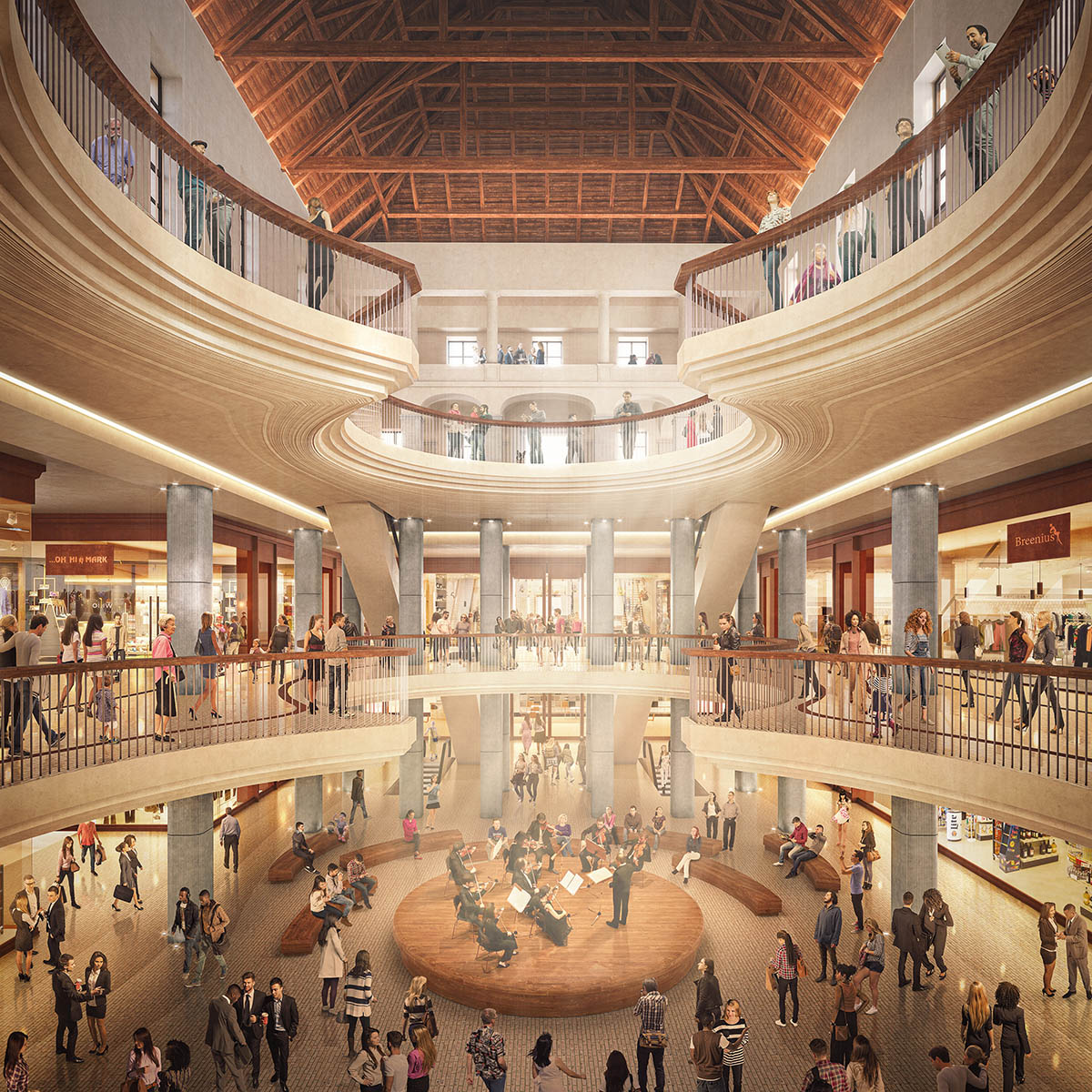
Heatherwick Studio's Savarin project in Prague which was presented during Heatherwick's lecture for reSITE. Image © Heatherwick Studio and Pixelflakes
Berrin Chatzi Chousein: You founded your studio in 1994 and it has been 25 years in your career until now. You designed many buildings in many scales in many places of the world if I consider your “freestyle innovative approach” in each case and for each structure, your buildings have a sort of mannerism in it, that’s true, but they are becoming a part of the city as well. They seem to me sometimes they are not buildings they are beautiful objects that can be objectified (or “nonconforming”) focused on only one point - saying that I want to be alone here - or they can be extracted from the context anytime - and it makes you feel like nothing will change after your building extracted. I really wonder how do you relate these structures within the existing the city fabric, the heritage or the history? How do you evaluate all these inputs before you start the project?
Thomas Heatherwick: For example, our new Savarin project for Prague, because the project is utterly stitched in and you can’t take away because that is actually built-in into everything around and the project we're doing in Tokyo is a piece of the whole district. There is a planted pergola structure that stitched in around. In architecture, the commissioning of buildings is very expensive and my studio has been going for over two decades, but it takes a long time to be trusted to do big building projects.
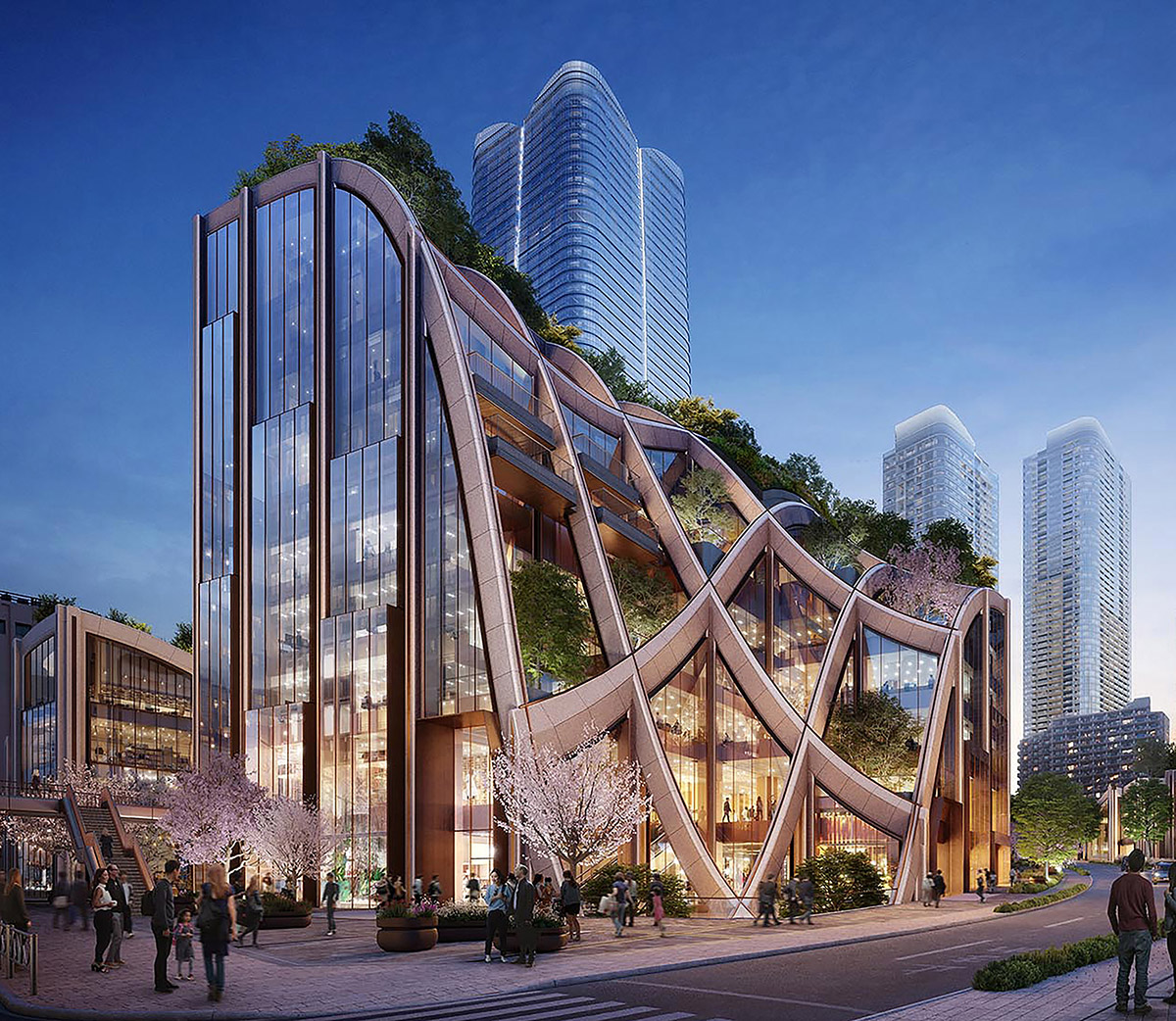
Heatherwick Studio's recent proposal for a new public realm in Tokyo. Image: East entrance. Image courtesy of Heatherwick Studio l DBox
Berrin Chatzi Chousein: I'm saying this in positive way. Because all of your buildings have a sort of mannerism, a special characteristic even if you put it in a masterplan.
Thomas Heatherwick: Until very recently in one of the comments that people made, they said they can’t guess a new project made by us. When I was growing up I did go to a particular city and I just saw something being built and I knew instantly who it was by.
I think my hope for the studio is that there are certain values that I think are important. But in each place we try to use it as an excuse to develop something particular to there. So within our work we’ve done things that curl, twist, a hairy, or container like a very square, swell… I mean, but if the world was making that - like I've had people who said to me: “oh, well, you do organic things". But often the work is a response to the place.
And it's just you're probably experiencing that it feels the world is going astonishingly boxy. In the past things we used rectangularity, but rectangularity dumbed down into very simplistic boxes with remarkably little sophistication. And it makes our response be to offer a counterpoint. But we would be the first people if a context is all curved, probably to propose a very square box because you're trying to make variety and difference in interest. So in the context of remorseless box making, it feels like a breath of fresh air to have something that makes you ask "what is that?". But it's a different shape in each different place.
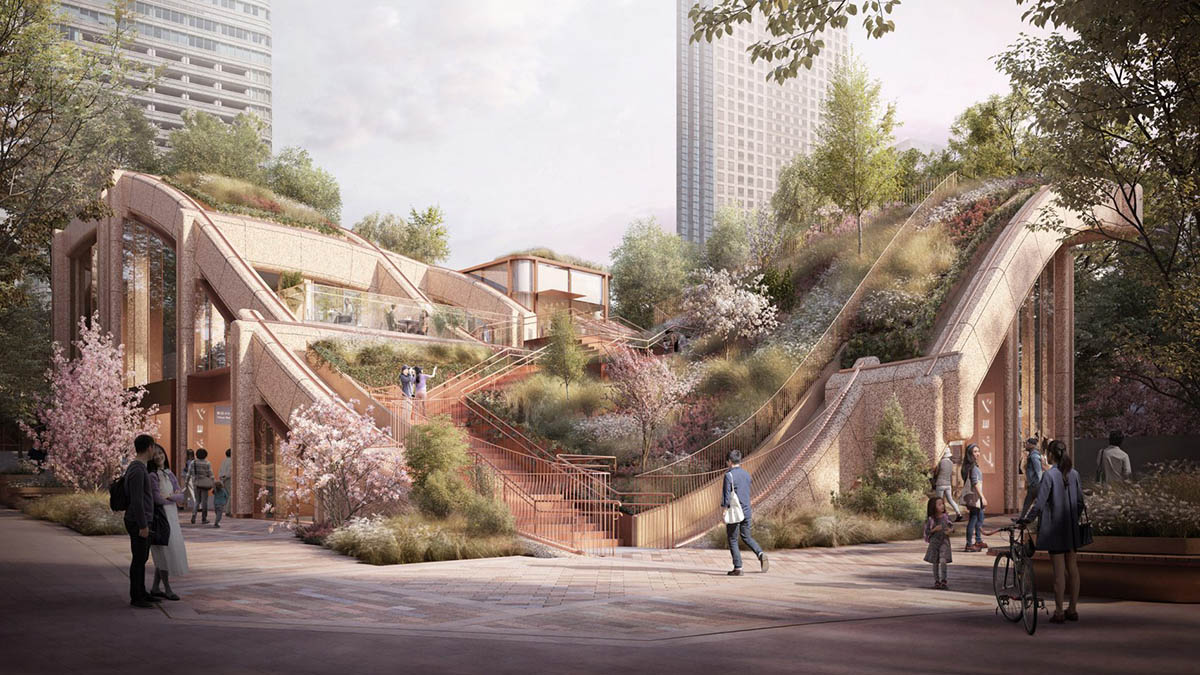
Heatherwick's new Tokyo project for a new public realm. Image © Heatherwick Studio | Darcstudio
"I would design a prison but I need to see the people who were commissioning us were committed to somewhere becoming a place of learning rather than hurting people more"
Berrin Chatzi Chousein: Is there a typology that you have wanted to design so far, but have not yet achieved? Would you design a prison for example?
Thomas Heatherwick: Yes and many. And yes I would design a prison but I need to see the people who were commissioning us were committed to somewhere becoming a place of learning rather than hurting people more. I also believe that there are too many people in prison who really shouldn't be there. We have actually done something by thinking about that for a not-profit organization looking at the incarceration of women. In the UK there over 170,000 men and about 4,000 women in prison. Approximately half of those four thousand women were arrested by very little stupid things like for not paying the television license and there are many things like that. It is very polarized – either you are in prison or free – when most of the people in prison haven’t had the privilege like you and I have had in our lives.
So we are trapped with a society that believes that it wants to punish and hurt people more. But if you hurt someone more, and they will be out of that prison in 3 years or 4 years and will be sitting next to you on the bus and will possibly become a more dangerous person. Or you can give them some hope and possibility and not damage them more but actually help them. If it was really the project brief to make a place that was going to try to take people and help them move to a next stage in their life, that would be a training brief and it would be like designing something in somewhere like a residential university, which is a humble one, or very frugal one - but somewhere that was a frame of glimmer of hope and access to people who will give them the hope.
I was just amazed at the prisons in Britain for example. We are here for a conference and we have talked about many things but we have never been asked to speak about a prison. And when I went to a prison visit and spoke with some prisoners and asked if they have talks programs, external people, etc. for instance – and certainly in the UK many of the prisons don’t have many people to prioritize this issue by giving that talk because you know that you could have learned about something together.
I'm not obsessed with prison. But I can design anything where people will be hopeful – like the huge need for housing in the UK - but also hospitals, schools to let the humanistic things getting better. That's where you can make the most difference.
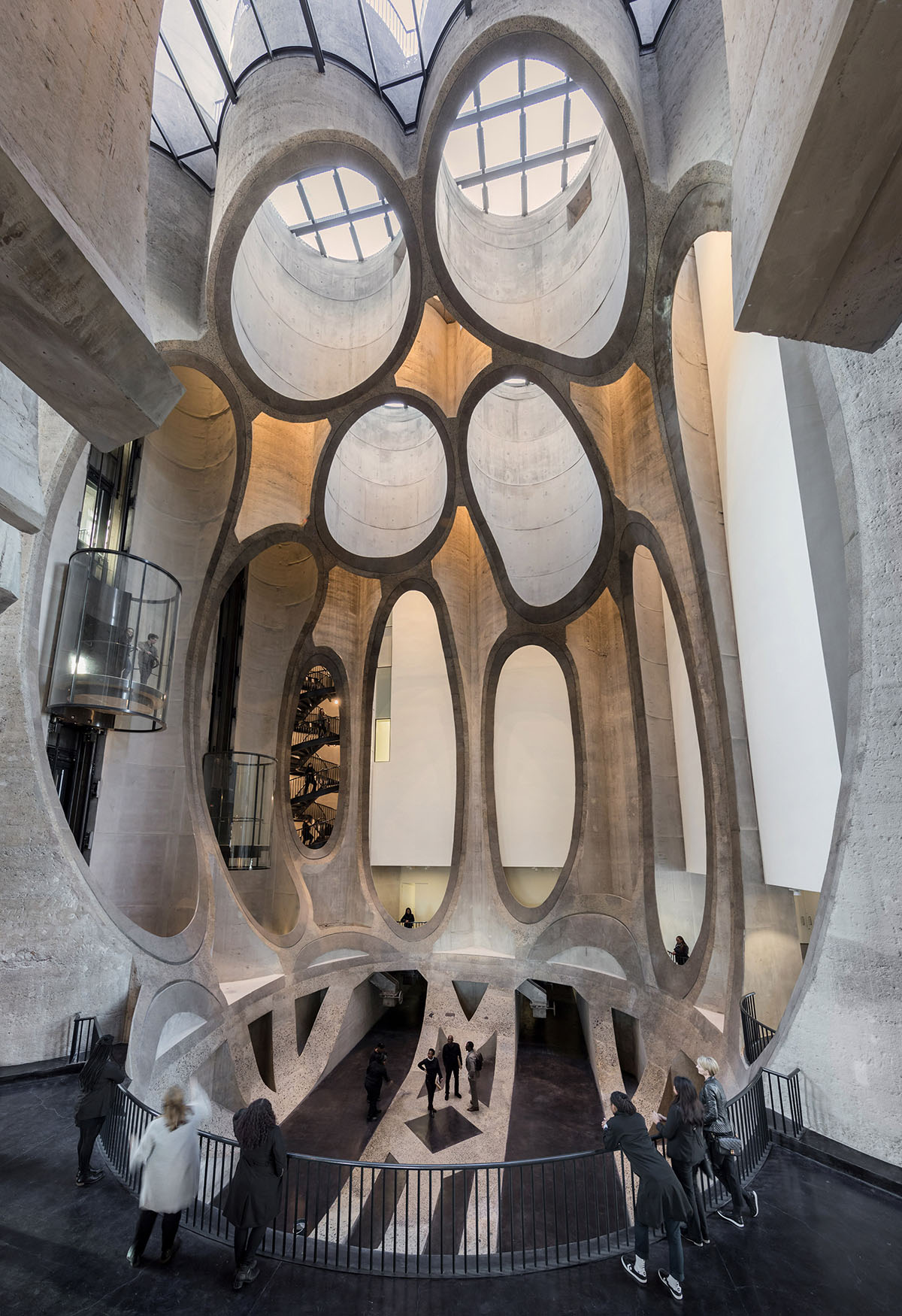
From the interior of the Zeitz MOCAA in Cape Town. The studio carved out the inside of a historic grain silo building which makes the heart of the building. Image © Iwan Baan
"We are being motivated by the problem and trying not to have a style in the end"
I tried to look at what's the worst thing that we can make better? That's the most satisfying thing in life rather than taking something that is already really good and doing your version. Who cares about that? But you're not in control of all the projects you are given. We work with a brief in the end.
Berrin Chatzi Chousein: Do you obey all the rules of the brief?
Thomas Heatherwick: Of course not. But we obey the spirit of the brief which is what's the actual real intention. At the simplest when we were asked do the Olympic cauldron, we were asked to make no moving parts. But we researched it, we saw at the Sydney Olympics the cauldron go stuck for 2 minutes. So then we asked "you don’t really mean no moving parts, what you mean is to make sure it doesn’t go wrong."
And so we actually did the Olympic cauldron with the most moving parts in the history of all Olympic cauldrons because we wanted to achieve that brief, which is actually make a concluding meaningful end to an opening ceremony. So we are trying the find what’s the real brief and our conversations in the studio are always to find what's the real problem to solve. Our passion is about solving problems.
We are not trying to express ourselves around the world, like how do we do something in Prague. We are being motivated by the problem and trying not to have a style in the end. When I was little, I wanted to be an “inventor” in a sense I felt an inventor doesn’t have a style. It's about solving the problem and it surprised me how style led the worlds of building design have become. In each of our projects, we see it like “inventing”. So we always ask: what's the problem? what are the issues? and what might be a solution to it?. And the greatest pleasure is starting to do something that will be particular to that place and that feels the greatest respect you can give to a place. It is just not about walking in and do your signature, but I actually walk in and do something unique to that place.
Top image: Thomas Heatherwick, founder of Heatherwick Studio. Image © Elena Heatherwick
(end of the transcript)
